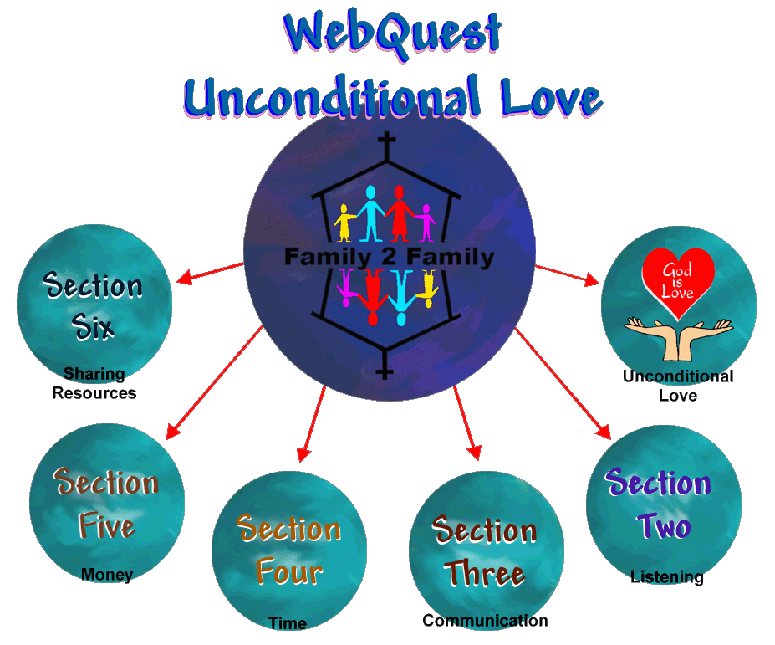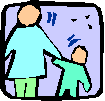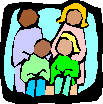What
is Unconditional Love?
Unconditional
love says, I will not only love you if you do what I say or behave
in the right way, but I will love you anyway. Unconditional love is
a quiet understanding, a mutual confidence, sharing, and forgiving.
Unconditional love is loyalty through good times and bad times. It
settles for less than perfection and makes allowances for human weaknesses.
Unconditional love is content with the present as it hopes for the
future. Unconditional love doesn't brood over the past. It has no
day-in and day-out chronicle of irritations, problems, compromises,
and disappointments. But rather it shares big victories, and common
goals. If you have unconditional love in your life, it can make up
for many things that are missing. If you don't have unconditional
love in your life, no matter how wealthy you are, there is never enough.
To
love unconditionally is to find happiness in making others happy.
It is to understand what others think and feel and need and show you
care in what you say and do. It is to know an other's weaknesses yet
see them as strong. It is to accept others as they are; and when they
fail your aspirations or spurn your outstretched arm, you keep the
door of your heart open. It is to appreciate the importance of others
and to help them appreciate their own importance. Most of all, unconditional
love is losing ourselves in something greater than "self."
Unconditional love is knowing all about your mate and loving them
still, facing realities as they are and deliberately caring more.
|
Your
Task
1.
In a mentoring team, discussion is essential. Allow each member
to share ideas during each step of the WebQuest process.
2.
During this study you will be discussing unconditional love.
3.
Follow the six process steps.
Step
1 - Learn about the family history.
Step
2 - Read the case study and answer the reflection questions.
Step
3 - Produce a Problem Statement and add it to the Discussion/Communication
box to share what you have done with others.
Step
4 - Use the Links to go on a WebQuest to research on the
web.
Step
5 - Produce a Hypothesis and use the Discussion/Communication
box to share what you have come up with.
Step
6 - Finally, use the Discussion/Communication box again
to reflect and share on the learning experience.
|
Step 1: Learn about a family
Pick
a family from the choices linked on the family history page and
learn about a family, their history and all the struggles they are
currently facing.
|
Step
2:
Read a case study on the family you picked
Read
a case study from one of the following categories that match the
family history that you read from Step 1
Create
a list on a piece of paper under the heading: "What do we know?"
This may include data from the family history, the case study, or
information based on prior knowledge.
|
|
STEP
1 | STEP
2 | STEP
3 | STEP 4 | STEP
5 | STEP 6
Step
3: Develop a Problem Statement
A
problem statement should come from your analysis of what you know.
The problem statement will probably have to be refined as new information
is discovered and brought to bear on the situation. Typical problem
statements may be based on discrepant events, incongruities, anomalies,
or stated needs of the family.
Need
Help? View Problem Statement
Helps
"What
is this families problem"
Problem
Statement Discussion Boards
Enter
The Family Life Curriculum Forum and submit your problem
statement on the discussion page.

|
|
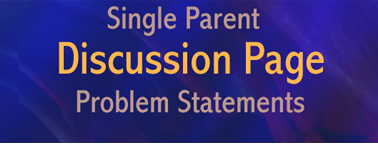
|
|
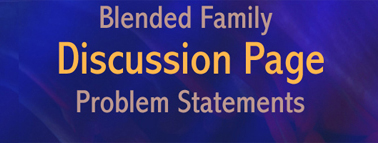
|
|

Forum
Rules:
1.
You must log on by creating a user name and password.
2.
Each group should maintain the same user name to enable
discussion consistency.
3.
You may not use the discussion boards for sales or advertisements.
4.
You may not use profanity.
5.
Respect and courtesy for others is required.
|
|
Step
4: Gather information on the Web
Search
for what you need to know about your study
List
on paper what is needed for your family. Presented with the problem,
you will need to find information on this topic to research family
issues. Make a second list on your paper under the heading: "What
do we need to know?" These questions will guide searches that
will take place on-line.
|
Step
5: Formulate a hypothesis
Under
the heading: "What should we do?" list actions that may
be taken, recommendations and solutions.
Need
Help? View Hypothesis Helps
"What
should we do?"
Hypothesis
Statement Discussion Boards
Enter
The Family Life Curriculum Forum and submit your hypothesis
statement on the discussion page.

|
|

|
|

|
|

Forum
Rules:
1.
You must log on by creating a user name and password.
2.
Each group should maintain the same user name to enable
discussion consistency.
3.
You may not use the discussion boards for sales or advertisements.
4.
You may not use profanity.
5.
Respect and courtesy for others is required
|
|
STEP
1 | STEP
2 | STEP
3 | STEP 4 | STEP
5 | STEP 6
Step
6: Reflection and Sharing
As
part of reflection and sharing, present your findings and recommendations.
The presentation should bring together all the material gathered in
the previous steps. Analyze the problem statement, questions, data
gathered, analysis of data, and support for solutions and recommendations
based on other peoples comments in the discussion pages to make an
argument to support your solution.
Need
Help? View Reflection Helps
"Conclusion"
Reflection
Statement Discussion Boards
Enter
The Family Life Curriculum Forum and submit your reflection
statement on the discussion page.
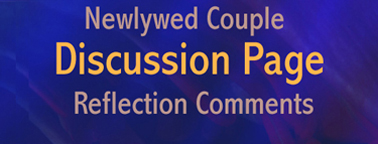
|
|
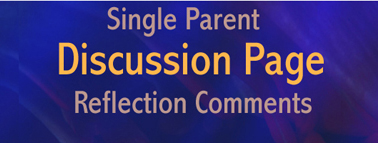
|
|
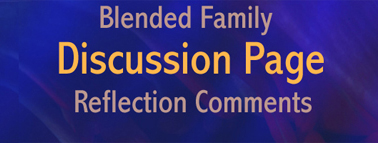
|
|
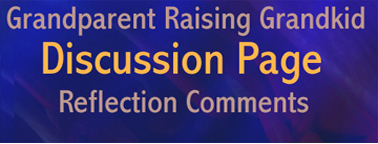
Forum
Rules:
1.
You must log on by creating a user name and password.
2.
Each group should maintain the same user name to enable
discussion consistency.
3.
You may not use the discussion boards for sales or advertisements.
4.
You may not use profanity.
5.
Respect and courtesy for others is required.
|
|
Lets
see what we have learned!
Unconditional
love is not natural to our human nature. If we want unconditional
love we must first learn it from God, the master of love.
A
little boy was told by his doctor that he could save his sister's
life by giving her some blood. The six-year-old girl was near
death, a victim of disease from which the boy had made a marvelous
recovery two years earlier. Her only chance for restoration
was a blood transfusion from someone who had previously conquered
the illness. Since the two children had the same rare blood
type, the boy was the ideal donor. "Johnny, would you
like to give your blood for Mary?" the doctor asked.
The boy hesitated. His lower lip started to tremble. Then
he smiled, and said, "Sure, Doc. I'll give my blood for
my sister." Soon the two children were wheeled into the
operating room-Mary, pale and thin; Johnny, robust and the
picture of health. Neither spoke, but when their eyes met,
Johnny grinned. As his blood siphoned into Mary's veins, one
could almost see new life come into her tired body. The ordeal
was almost over when Johnny's brave little voice broke the
silence, "Say Doc, when do I die?" It was only then
that the doctor realized what the moment of hesitation, the
trembling of the lip, had meant earlier. Little Johnny actually
thought that in giving his blood to his sister he was giving
up his life! And in that brief moment, the final decision
that he had made was the greatest love of all. The unconditional
sacrificing love.
The most important lesson we need to gain from this study
is that our families are redeemed by the unconditional sacrificing
love of Jesus. So using this family curriculum should teach
us to have the same unconditional sacrificing love as Christ.
|
|
|
